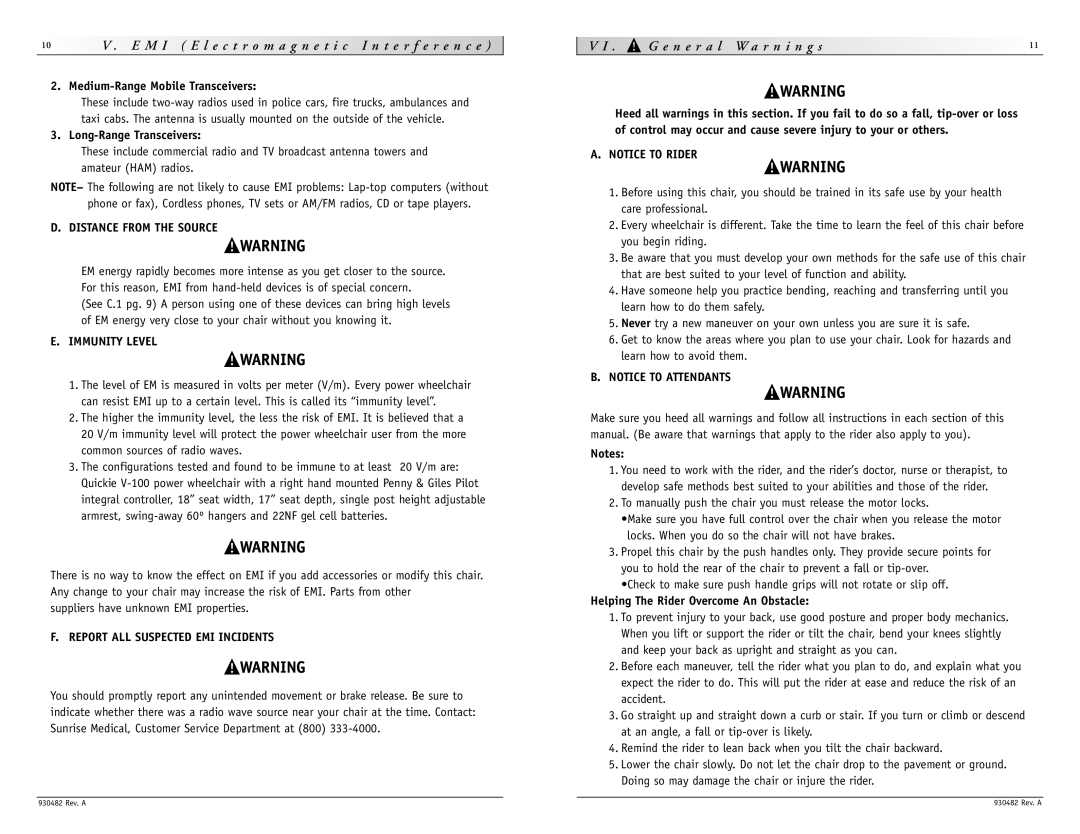V-100 specifications
The Sunrise Medical V-100 is a cutting-edge powered wheelchair designed to provide users with exceptional mobility and comfort. This wheelchair embodies innovation and engineering excellence, tailored to meet the diverse needs of individuals with varying degrees of mobility challenges.One of the standout features of the V-100 is its advanced seating system, which provides unparalleled support and adjustability. Users can easily modify seating positions to achieve maximum comfort, whether for daily activities or prolonged use. The chair's ergonomic design promotes proper posture, reducing the risk of discomfort or secondary health issues over time.
The V-100 is equipped with powerful motors that deliver smooth and swift operation. With a top speed that ensures efficiency in navigating various terrains, this wheelchair empowers users to maintain an active lifestyle. Its robust suspension system further enhances ride quality, enabling smooth transitions across different surfaces, such as grass, gravel, and uneven pavements.
Another impressive characteristic of the V-100 is its array of customizable options. This powered wheelchair can be tailored to fit individual user preferences and requirements. Features such as adjustable armrests, detachable footrests, and choice of seat widths contribute to a personalized experience that enhances user satisfaction.
The V-100 also integrates innovative technologies, such as advanced joystick control, which provides intuitive handling. The joystick is responsive, offering precise maneuvering capabilities that facilitate navigation in tight spaces. Additionally, the chair's compact design allows for easy transport and storage, making it a practical choice for users on the go.
Safety is paramount in the design of the V-100. The wheelchair features integrated safety measures, including anti-tip wheels and programmable speed settings, ensuring a secure riding experience. Coupled with high-quality materials and robust construction, the V-100 is built to withstand daily use while providing reliable performance.
In summary, the Sunrise Medical V-100 is a state-of-the-art powered wheelchair that combines advanced technology, customizable features, and exceptional comfort. Its commitment to user satisfaction and safety makes it an ideal choice for individuals seeking independence and mobility. Whether navigating through urban environments or enjoying recreational activities, the V-100 empowers users with the confidence to face everyday challenges head-on.

